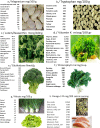Nutrition of the critically ill - emphasis on liver and pancreas
- PMID: 24570901
- PMCID: PMC3924628
- DOI: 10.3978/j.issn.2304-3881.2012.10.14
Nutrition of the critically ill - emphasis on liver and pancreas
Abstract
About 25 million individuals undergo high risk surgery each year. Of these about 3 million will never return home from hospital, and the quality of life for many of those who return is often significantly impaired. Furthermore, many of those who manage to leave hospital have undergone severe life-threatening complications, mostly infections/sepsis. The development is strongly associated with the level of systemic inflammation in the body, which again is entirely a result of malfunctioning GI microbiota, a condition called dysbiosis, with deranged composition and function of the gastrointestinal microbiota from the mouth to the anus and impaired ability to maintain intact mucosal membrane functions and prevent leakage of toxins-bacterial endotoxins and whole or debris of bacteria, but also foods containing proteotoxins gluten, casein and zein and heat-induced molecules such as advanced glycation end products (AGEs) and advanced lipoxidation end products (ALEs). Markedly lower total anaerobic bacterial counts, particularly of the beneficial Bifidobacterium and Lactobacillus and higher counts of total facultative anaerobes such as Staphylococcus and Pseudomonas are often observed when analyzing the colonic microbiota. In addition Gram-negative facultative anaerobes are commonly identified microbial organisms in mesenteric lymph nodes and at serosal "scrapings" at laparotomy in patients suffering what is called "Systemic inflammation response system" (SIRS). Clearly the outcome is influenced by preexisting conditions in those undergoing surgery, but not to the extent as one could expect. Several studies have for example been unable to find significant influence of pre-existing obesity. The outcome seems much more to be related to the life-style of the individual and her/his "maintenance" of the microbiota e.g., size and diversity of microbiota, normal microbiota, eubiosis, being highly preventive. About 75% of the food Westerners consume does not benefit microbiota in the lower gut. Most of it, refined carbohydrates, is already absorbed in the upper part of the GI tract, and of what reaches the large intestine is of limited value containing less minerals, less vitamins and other nutrients important for maintenance of the microbiota. The consequence is that the microbiota of modern man has a much reduced size and diversity in comparison to what our Palelithic forefathers had, and individuals living a rural life have today. It is the artificial treatment provided by modern care, unfortunately often the only alternative, which belongs to the main contributor to poor outcome, among them; artificial ventilation, artificial nutrition, hygienic measures, use of skin penetrating devices, tubes and catheters, frequent use of pharmaceuticals, all known to significantly impair the total microbiome of the body and dramatically contribute to poor outcome. Attempts to reconstitute a normal microbiome have often failed as they have always been undertaken as a complement to and not an alternative to existing treatment schemes, especially treatments with antibiotics. Modern nutrition formulas are clearly too artificial as they are based on mixture of a variety of chemicals, which alone or together induce inflammation. Alternative formulas, based on regular food ingredients, especially rich in raw fresh greens, vegetables and fruits and with them healthy bacteria are suggested to be developed and tried.
Keywords: Health care; IGF-1; IL1; LPS; NF-kB; TNF; advanced glycation end products (AGEs); advanced lipoxidation end products (ALEs); airways; amaranth; amnion; antibiotics; antioxidants; apoptosis; avocado; barriers; biological; blood-brain barrier; buckwheat; cCtokines; casein; chemotherapeutics; critical care; curcumin; eco-biologicals; endothelium; endotoxin; enteral nutrition; fat diet; fatty acids; fruits; gluten; greens; growth; growth factors; gut; infection; inflammation; insulinogenic; lactobacillus; lactobacillus paracasei; lactobacillus plantarum; leakage; liver cirrhosis; liver steatosis; long-chained; medium chained; microbial translocation; microbiome; microbiota; minerals; monsaturated; mucosa; neutrophils; nutraceuticals; nutrition; obesity; olive oils; oral cavity; osteoarthritis; paleolithic lifestyle; pancreatitis; parenteral nutrition; pharmaceuticals; placenta; plant fibers; plaques; poly-unsaturated; prebiotics; probiotic bacteria; proteotoxins; quinoa; red palm oil; refined carbohydrate diet; replication; saturated fatty acids; schimpanzee; short-chained; skin; soy; stress; surgery; toll-like; transplantation; trauma; vagina; vegetables; western lifestyle; whey; zein.
Figures



References
-
- Kumar G, Kumar N, Taneja A, et al. Nationwide trends of severe sepsis in the twenty first century (2000-2007). Chest 2011;140:1223-31 - PubMed
-
- Hall MJ, Williams SJ, DeFrances CJ, et al. Inpatient care for septicemia or sepsis: a challenge for patients and hospitals 2012. Available online: http://www.cdc.gov/nchs/data/databriefs/db62.pdf - PubMed
-
- Weiser TG, Regenbogen SE, Thompson KD, et al. An estimation of the global volume of surgery: a modelling strategy based on available data. Lancet 2008;372:139-44 - PubMed
Publication types
LinkOut - more resources
Full Text Sources
